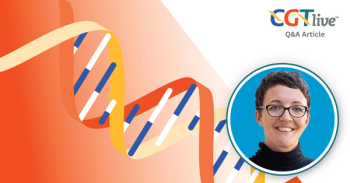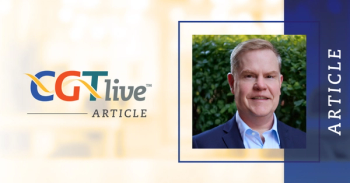
FDA Approves Second-Line Axicabtagene Ciloleucel for LBCL
The FDA has approved second-line axicabtagene ciloleucel as a treatment for adult patients with large B-cell lymphoma following frontline chemoimmunotherapy.
The FDA has approved axicabtagene ciloleucel (Axi-cel; Yescarta) as a treatment for adult patients with large B-cell lymphoma (LBCL) that is refractory to first-line chemoimmunotherapy or that relapses within 12 months of first-line chemoimmunotherapy.1
The approval was based on data from the phase 3 ZUMA-7 trial (NCT03391466), which demonstrated an independently assessed median event-free survival (EFS) of 8.3 with axi-cel compared with 2.0 months for standard therapy. The 24-month EFS rate was 41% with the CAR T-cell therapy compared with 16% for standard therapy, which consisted of 2 or 3 cycles of chemoimmunotherapy followed by high-dose therapy (HDT) and autologous stem cell transplant (ASCT) for eligible patients (HR, 0.40; 95% CI, 0.31-0.51; P <.0001). The estimated overall survival at 2 years was 61% with axi-cel and 52% with standard therapy.2
"Today’s approval marks an exciting new standard of care," ZUMA-7 principal investigator Frederick L. Locke, MD, Co-Leader of the Immuno-Oncology Program at Moffitt Cancer Center, said in a statement. "The ZUMA-7 trial enabled us to look at the broader picture of what happens to patients after a decision is made to follow a particular treatment path. What we found was that axi-cel resulted in three times as many patients receiving treatment with curative intent (CAR T-cell therapy), and an overall better outcome for patients than the previous standard of care. Additionally, we have now amassed significant experience with CAR T-cell therapy to better manage or prevent side-effects, making this treatment more accessible for older patients and those with medical conditions for whom the standard of care might be difficult."
The ZUMA-7 trial randomized 359 patients 1:1 to receive either a single infusion of axi-cel (n = 180) or standard of care (n = 179). The median age of patients was 59 years (range, 21-81), and 30% were aged 65 years or older. Seventy-nine percent of patients had stage III/IV disease, and 45% had a sAAIPI of 2 to 3. Seventy-four percent of patients were primary refractory to their frontline therapy vs 26% who relapsed within 1 year of their prior treatment. Sixteen percent of patients had HGBL (double-/triple-hit) vs 33% who had double-expressor lymphoma and 6% who had MYC rearrangement. Fifty-four percent of patients had elevated lactate dehydrogenase levels.
Patients received fludarabine and cyclophosphamide lymphodepleting chemotherapy prior to infusion of CAR T cells. An initial disease assessment was performed at day 50; those on the CAR T-cell therapy continued to day 100, day 150, and long-term follow-up. Those who responded to treatment with standard therapy, either with a complete response (CR) or partial response (PR), went on to HDT-ASCT. Nonresponders received additional treatment off trial protocol. Steroid-only bridging therapy, without chemotherapy, was optional.
At a median follow-up of 24.9 months, the objective response rate was 83% for patients treated with axi-cel compared with 50% with standard of care therapy. The complete response rate was 65% and 32%, respectively. Of those enrolled in the standard arm, 35% were capable of receiving HDT-ASCT.
"Definitive clinical trial results such as these do not come along often and should drive a paradigm shift in how patients with relapsed or refractory LBCL are treated moving forward," ZUMA-7 investigator Jason Westin, MD, MS, Director, Lymphoma Clinical Research, and Associate Professor, Department of Lymphoma/Myeloma at The University of Texas MD Anderson Cancer Center, said in a statement. "Patients who do not respond to or relapse after initial treatment should quickly be referred to a CAR T-cell therapy authorized treatment center for evaluation."
Grade 3 or higher adverse effects (AEs) were experienced by 91% of patients on the CAR T-cell therapy vs 83% of those on standard therapy. The most common toxicities that were grade 3 or higher included neutropenia (69% vs 41%, respectively), anemia (30% vs 39%), and leukopenia (29% vs 22%). Grade 3 or higher serious toxicities were observed in 42% and 40% of patients on axi-cel and standard therapy, respectively.
Grade 3 or higher cytokine release syndrome (CRS) was observed in 6% of patients on axi-cel; the most common any-grade symptoms included pyrexia (99%), hypotension (43%), and sinus tachycardia (31%). CRS was managed with tocilizumab (Actemra; 65%), corticosteroids (24%), and vasopressors (6%). The median time to onset of this toxicity was 3 days and the median duration of events was 7 days.
Grade 3 or higher neurologic events were experienced by 21% of those who received the CAR T-cell therapy vs 1% of those given standard therapy. The most common AEs comprised tremor (26% with axi-cel vs 1% with SOC), confusional state (24% vs 2%, respectively), and aphasia (21% vs 0%). These events were all managed by corticosteroids. The median time to onset was 7 days with axi-cel and 23 days with SOC; the median duration of events was 9 days and 23 days, respectively.
"Today’s FDA approval brings that hope to more patients by enabling the power of CAR T-cell therapy to be used earlier in the treatment journey. This milestone has been years in the making," Christi Shaw, Chief Executive Officer of Kite, the company that develops axi-cel, said in a statement. "On behalf of the entire Kite community, we would like to thank the patients and physicians who have been on this journey with us. You are what drives us every day to explore the full potential of cell therapy."
Axi-cel was initially approved in 2017 for patients with LBCL who had received 2 or more prior lines of therapy. In addition to LBCL, the CAR T-cell therapy is also approved for patients with follicular lymphoma following 2 prior lines of therapy. The recommended dose is 2 x 106 CAR-positive T cells per kilogram of body weight, with a maximum of 2 x 108 CAR-positive viable T cells.
References:
- FDA approves axicabtagene ciloleucel for second-line treatment of large B-cell lymphoma. News release. FDA; April 1, 2022. Accessed Aprl 1, 2022. https://bit.ly/3iSQ8XT
- Locke F, Miklos DB, Jacobson CA, et al. Axicabtagene Ciloleucel as Second-Line Therapy for Large B-Cell Lymphoma. N Engl J Med. 2022;386:640-654. DOI: 10.1056/NEJMoa2116133
Newsletter
Stay at the forefront of cutting-edge science with CGT—your direct line to expert insights, breakthrough data, and real-time coverage of the latest advancements in cell and gene therapy.































